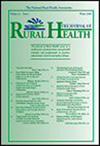To estimate percent excess deaths during the COVID-19 pandemic by rural-urban residence in the United States and to describe rural-urban disparities by age, sex, and race/ethnicity.
Using US mortality data, we used overdispersed Poisson regression models to estimate monthly expected death counts by rurality of residence, age group, sex, and race/ethnicity, and compared expected death counts with observed deaths. We then summarized excess deaths over 6 6-month time periods.
There were 16.9% (95% confidence interval [CI]: 16.8, 17.0) more deaths than expected between March 2020 and February 2023. The percent excess varied by rurality (large central metro: 18.2% [18.1, 18.4], large fringe metro: 15.6% [15.5, 15.8], medium metro: 18.1% [18.0, 18.3], small metro: 15.5% [15.3, 15.7], micropolitan rural: 16.3% [16.1, 16.5], and noncore rural: 15.8% [15.6, 16.1]). The percent excess deaths were 20.2% (20.1, 20.3) for males and 13.6% (13.5, 13.7) for females, and highest for Hispanic persons (49% [49.0, 49.6]), followed by non-Hispanic Black persons (28% [27.5, 27.9]) and non-Hispanic White persons (12% [11.6, 11.8]). The 6-month time periods with the highest percent excess deaths for large central metro areas were March 2020-August 2020 and September 2020-February 2021; for all other areas, these time periods were September 2020-February 2021 and September 2021-February 2022.
Percent excess deaths varied by rurality, age group, sex, race/ethnicity, and time period. Monitoring excess deaths by rurality may be useful in assessing the impact of the pandemic over time, as rural-urban patterns appear to differ.


